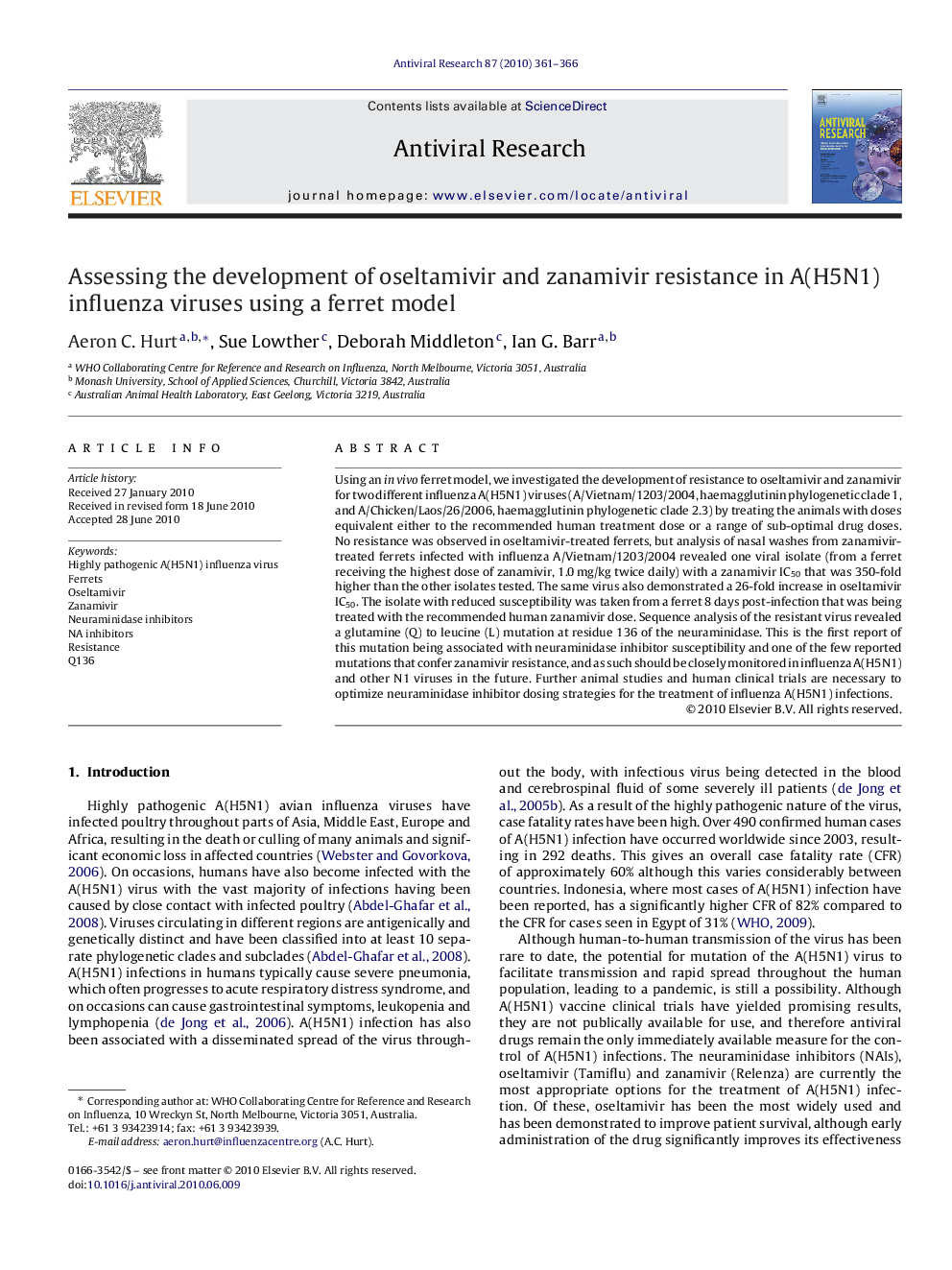| Article ID | Journal | Published Year | Pages | File Type |
|---|---|---|---|---|
| 2510893 | Antiviral Research | 2010 | 6 Pages |
Using an in vivo ferret model, we investigated the development of resistance to oseltamivir and zanamivir for two different influenza A(H5N1) viruses (A/Vietnam/1203/2004, haemagglutinin phylogenetic clade 1, and A/Chicken/Laos/26/2006, haemagglutinin phylogenetic clade 2.3) by treating the animals with doses equivalent either to the recommended human treatment dose or a range of sub-optimal drug doses. No resistance was observed in oseltamivir-treated ferrets, but analysis of nasal washes from zanamivir-treated ferrets infected with influenza A/Vietnam/1203/2004 revealed one viral isolate (from a ferret receiving the highest dose of zanamivir, 1.0 mg/kg twice daily) with a zanamivir IC50 that was 350-fold higher than the other isolates tested. The same virus also demonstrated a 26-fold increase in oseltamivir IC50. The isolate with reduced susceptibility was taken from a ferret 8 days post-infection that was being treated with the recommended human zanamivir dose. Sequence analysis of the resistant virus revealed a glutamine (Q) to leucine (L) mutation at residue 136 of the neuraminidase. This is the first report of this mutation being associated with neuraminidase inhibitor susceptibility and one of the few reported mutations that confer zanamivir resistance, and as such should be closely monitored in influenza A(H5N1) and other N1 viruses in the future. Further animal studies and human clinical trials are necessary to optimize neuraminidase inhibitor dosing strategies for the treatment of influenza A(H5N1) infections.
